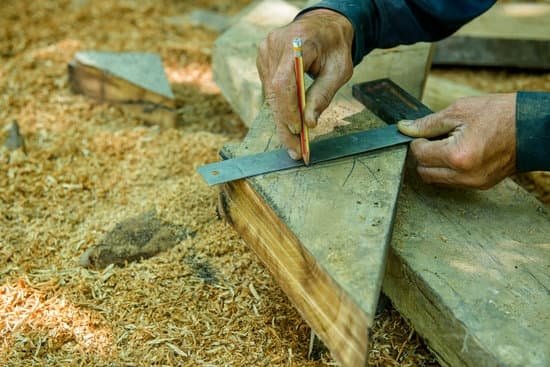Woodwork biscuits are small, oval-shaped wooden pieces that are used in woodworking projects to align and strengthen joints. These biscuits, also known as wood biscuits or plate joiners, are a popular choice among woodworkers due to their versatility and ease of use. In this article, we will delve into the history, benefits, types, proper usage, common mistakes to avoid, tips for best results, and stunning examples of woodwork projects made with these handy little tools.
Originating in the 1950s by Herman Steiner, woodwork biscuits have revolutionized the woodworking industry by providing a simple yet effective method for joining two pieces of wood together. Typically made from compressed beechwood or other hardwoods, these biscuits are inserted into slots cut into the mating edges of the wood pieces before glue is applied. Once dried, the glue creates a strong bond between the pieces, ensuring a durable joint that can withstand heavy loads.
One of the key benefits of using woodwork biscuits in woodworking projects is their ability to create precise and sturdy joints without the need for complex tools or techniques. By simply cutting matching slots on two pieces of wood with a biscuit joiner and inserting the biscuit with some glue, woodworkers can achieve seamless joints that enhance both the appearance and structural integrity of their creations.
Additionally, woodwork biscuits allow for quick assembly and disassembly of parts, making them ideal for furniture makers and carpenters working on large projects.
History and Origins of Woodwork Biscuits
Woodwork biscuits, also known as plate joiners, are small compressed wood pieces used in woodworking to create strong and seamless joints between two pieces of wood. The history of woodwork biscuits can be traced back to the 1950s when Swiss cabinetmaker Hermann Steiner invented the plate joiner.
Steiner was looking for a way to simplify the process of joining wood pieces without compromising the strength and durability of the joints. His invention revolutionized the woodworking industry by providing a quick and efficient solution for creating sturdy connections between wooden components.
Origins of Woodwork Biscuits
The concept of using woodwork biscuits in joinery dates back centuries, but it was only in the mid-20th century that the modern form of plate joiners we use today was developed. Initially made from compressed beechwood, these small oval-shaped biscuits have become an essential tool for both professional woodworkers and DIY enthusiasts alike. Over time, different materials such as plastic and metal have been utilized to manufacture biscuits, catering to various woodworking needs and preferences.
Evolution of Woodwork Biscuits
Since their inception, woodwork biscuits have undergone significant improvements in terms of design, materials used, and precision manufacturing techniques. This evolution has led to a wide range of biscuit sizes and shapes available on the market, allowing woodworkers to choose the best fit for their specific projects.
As technology continues to advance in the woodworking industry, it is safe to say that woodwork biscuits will remain an indispensable tool for creating strong and durable joints in woodworking projects for years to come.
Benefits of Using Woodwork Biscuits in Woodworking Projects
Woodwork biscuits, also known as plate joiners, are small and oval-shaped wooden pieces that are used to join two pieces of wood together in woodworking projects. These biscuits are made from compressed beech wood and are designed to expand when they come into contact with glue, creating a tight and secure joint. The use of woodwork biscuits in woodworking projects has become increasingly popular due to the numerous benefits they offer.
Increased Strength and Stability
One of the main benefits of using woodwork biscuits in woodworking projects is the increased strength and stability they provide to joints. When properly installed with glue, these biscuits create a strong bond between two pieces of wood, resulting in a durable and long-lasting joint. This is especially important for furniture or cabinetry where stability is crucial.
Alignment Assistance
Another advantage of using woodwork biscuits is their ability to assist with alignment during assembly. By inserting biscuits into matching slots on both pieces of wood, it helps ensure that the pieces are properly aligned before clamping them together. This not only saves time during the assembly process but also helps prevent misaligned joints that can result in uneven surfaces or gaps.
Minimal Visible Fasteners
Woodwork biscuits offer a clean and seamless look to woodworking projects by providing a way to join pieces without visible fasteners such as screws or nails. This makes them ideal for projects where aesthetics are important, as the joints appear smooth and free from any distracting hardware. Additionally, this feature allows for easier finishing since there are no protruding fasteners to work around. Using woodwork biscuits can elevate the overall appearance of the final product while maintaining structural integrity.
Types of Woodwork Biscuits and Their Uses
Woodwork biscuits come in various types and sizes, each serving a specific purpose in woodworking projects. Understanding the different types of woodwork biscuits and their uses is essential for achieving strong and reliable joints. Here are some common types of woodwork biscuits along with their respective uses:
- Size 0 Biscuits: These small, thin biscuits are perfect for joining narrow pieces of wood together. They are commonly used in projects where space is limited.
- Size 10 Biscuits: Larger than Size 0, Size 10 biscuits are versatile and can be used for a wide range of woodworking projects. They provide ample surface area for gluing, making them ideal for joining larger pieces of wood.
- Size 20 Biscuits: The largest of the standard biscuit sizes, Size 20 biscuits are great for heavy-duty applications where maximum strength is required.
Each type of woodwork biscuit offers unique advantages depending on the specific project requirements. By selecting the right size and type of biscuit for your woodworking project, you can ensure a sturdy and durable joint that will stand the test of time.
Using woodwork biscuits in joinery offers several benefits, including increased glue surface area, alignment assistance during assembly, and improved joint strength. By incorporating woodwork biscuits into your woodworking projects, you can achieve professional results with ease while adding structural integrity to your creations. Whether you’re a beginner or seasoned woodworker, mastering the use of woodwork biscuits can elevate the quality of your craftsmanship effectively.
In addition to standard wooden biscuits, there are also specialty options available for unique applications. Swellable wooden biscuits, for example, expand when they come into contact with moisture, providing an extra tight fit in damp environments. Aligned dowel wooden biscuits combine the benefits of both wooden dowels and traditional biscuits to create strong and accurate joints. Exploring these specialized options allows woodworkers to tailor their joinery techniques to specific project needs effectively.
How to Properly Use Woodwork Biscuits in Joinery
Woodwork biscuits are a versatile and essential tool in the woodworking industry, used for joining pieces of wood together seamlessly. Properly using woodwork biscuits in joinery can make a significant difference in the strength and quality of your woodworking projects. Here are some essential tips on how to use woodwork biscuits effectively:
- Choose the right size biscuit: Woodwork biscuits come in different sizes, typically labeled 0, 10, 20, and so on. It’s crucial to select the appropriate size biscuit based on the thickness of the wood you are working with.
- Mark your cuts: Before cutting slots for the woodwork biscuits, mark precise locations where they will be inserted. This step ensures accurate placement and alignment during assembly.
- Use a biscuit joiner: A biscuit joiner is a specialized tool that helps create perfectly-sized slots for the woodwork biscuits. Make sure to adjust the depth of cut on the joiner according to the size of the biscuit being used.
Properly aligning and gluing woodwork biscuits in joinery is crucial for a strong and durable bond between wooden pieces. Remember to apply an even coat of glue to both surfaces before inserting the biscuits and clamping them together firmly until the glue sets. With practice and attention to detail, using woodwork biscuits in joinery can elevate your woodworking projects to a professional level.
- Ensure proper alignment: Before inserting woodwork biscuits into slots, double-check their alignment by dry-fitting them without glue. This step helps prevent any misalignment issues during assembly.
- Allow sufficient drying time: After gluing the woodwork biscuits into place, allow sufficient time for the adhesive to cure fully before removing clamps or applying any stress to the joint.
- Sand down excess glue: Once the adhesive has dried completely, sand down any excess glue that may have squeezed out from between joints. This step helps achieve a smooth finish on your woodworking project.
Common Mistakes to Avoid When Using Woodwork Biscuits
When using woodwork biscuits in your woodworking projects, it is essential to be aware of common mistakes that can affect the quality and durability of your work. One common mistake to avoid is failing to properly align the biscuits during assembly.
If the biscuits are not properly aligned, it can result in uneven joints and compromised structural integrity. To prevent this, take the time to carefully mark and align both the biscuit slots and the corresponding pieces of wood before joining them together.
Another mistake to steer clear of is using too much glue when inserting the woodwork biscuits into their slots. While glue is necessary to secure the biscuits in place, an excess amount can cause a messy overflow that can be difficult to clean up and may even affect the final appearance of your project. Be sure to apply just enough glue to create a strong bond without causing any excess seepage.
Lastly, one common error when using woodwork biscuits is rushing through the process without allowing sufficient drying time for the glue. It’s crucial to follow the manufacturer’s recommendations for drying times to ensure that the joints are securely bonded before moving on to the next steps in your project.
Rushing this step can result in weak joints that may eventually fail under stress. Taking your time and allowing proper drying time will ultimately lead to a more professional and long-lasting finished product.
Tips and Tricks for Getting the Best Results With Woodwork Biscuits
Woodwork biscuits are small, oval-shaped pieces of compressed wood that are used in woodworking to join two pieces of wood together. These biscuits are designed to be installed into slots cut into the matching edges of the wood pieces, creating a strong and durable bond. When used properly, woodwork biscuits can provide efficient and reliable joints in various woodworking projects.
One essential tip for getting the best results with woodwork biscuits is to ensure that the biscuit slot is cut accurately. It is crucial to use a biscuit joiner or plate joiner tool with the correct blade size to create slots that perfectly fit the woodwork biscuits.
The depth and width of the slot should match the size of the biscuit for a snug fit. Additionally, aligning the slots on both pieces of wood accurately will contribute to a seamless joint when assembled.
Another trick to enhance the results when using woodwork biscuits is to apply an appropriate amount of glue before inserting the biscuit into the slot. Too much glue can cause excess squeeze-out, while too little glue may result in a weak bond.
Using a brush or roller to evenly distribute glue inside the slot ensures adequate coverage without creating a messy application. Proper clamping pressure after assembly is also crucial to allow the glue to cure effectively and strengthen the joint.
When working with woodwork biscuits, it is beneficial to consider their orientation during installation. Positioning the biscuits in line with the grain direction of the wood can help prevent issues like splitting or weakening of the joint over time. By following these tips and tricks, woodworking enthusiasts can achieve professional-looking results with woodwork biscuits in their projects, ensuring sturdy and lasting connections between wooden components.
| Woodworking Tip | Description |
|---|---|
| Accurate Slot Cutting | Use a biscuit joiner with correct blade size for precise slots matching biscuit size. |
| Proper Glue Application | Apply an adequate amount of glue evenly inside biscuit slot for strong bond without excess mess. |
| Orient Biscuits Correctly | Position biscuits in line with grain direction of wood to avoid potential joint issues. |
Examples of Stunning Woodwork Projects Made With Woodwork Biscuits
Woodwork biscuits are small, oval-shaped wooden components that are used in woodworking projects to join two pieces of wood together. These biscuits are inserted into slots created in the wood pieces, and when glue is applied, they swell and create a strong bond between the two surfaces. One of the primary advantages of using woodwork biscuits is their ability to provide alignment and added strength to joints in woodworking projects.
History has shown that woodwork biscuits have been around for centuries, with origins dating back to traditional Japanese joinery techniques. The modern version of woodwork biscuits, however, was popularized by Hermann Steiner in Switzerland during the 1950s. Since then, woodwork biscuits have become a staple in the woodworking industry due to their versatility and ease of use.
When it comes to creating stunning woodwork projects, using woodwork biscuits can elevate the overall quality and durability of your piece. Whether you are constructing furniture, cabinets, or other wooden structures, incorporating these small yet mighty components can make a big difference in the final outcome.
By following proper techniques and selecting the right type of woodwork biscuit for your project, you can achieve precise joints and seamless connections that enhance both the aesthetic appeal and structural integrity of your work.
| Woodworking Project | Description |
|---|---|
| Custom Dining Table | A handcrafted dining table featuring intricate patterns made possible by precise joinery using woodwork biscuits. |
| Bookshelf | An elegant bookshelf with adjustable shelves held securely in place with hidden woodwork biscuit joints. |
| Bed Frame | A sturdy bed frame showcasing seamless connections in its headboard and footboard thanks to strategically placed woodwork biscuits. |
Conclusion
In conclusion, the future of woodwork biscuits in the woodworking industry looks incredibly promising. As woodworking techniques continue to evolve and adapt to modern technologies, woodwork biscuits remain a versatile and essential tool for woodworkers of all levels. With their ability to create strong and seamless joints, woodwork biscuits are likely to stay a staple in woodworking projects for years to come.
One of the key factors driving the continued popularity of woodwork biscuits is their ease of use and efficiency in joinery. Whether you are a beginner or an experienced craftsman, incorporating woodwork biscuits into your projects can greatly enhance the overall quality and durability of your work. This simplicity combined with their effectiveness makes them a valuable asset in any woodworking workshop.
As advancements in woodworking machinery and tools continue to push boundaries, we can expect to see even more innovative ways to utilize woodwork biscuits in future projects. From intricate furniture designs to large-scale construction projects, the versatility of woodwork biscuits makes them a timeless classic in the world of woodworking. So as we look ahead to what lies beyond, one thing is certain: woodwork biscuits will play an integral role in shaping the future of woodworking craftsmanship.
Frequently Asked Questions
What Are Biscuits in Woodwork?
Biscuits in woodwork refer to small, oval-shaped wooden discs used to join two pieces of wood together. They are typically made from compressed beech wood and come in various sizes to accommodate different woodworking projects.
What Is the Difference Between a Woodworking Biscuit and Domino?
The key difference between a woodworking biscuit and a Domino lies in their size and the machinery used for their installation. Biscuits are smaller, typically made of beech wood, and require a special biscuit joiner tool for insertion.
Dominos, on the other hand, are larger, made of solid hardwood, and are inserted using a specialized mortise joint machine known as a Domino joiner.
What Does a Biscuit Joint Look Like?
A biscuit joint is characterized by an oval-shaped slot cut into the surface of two adjoining pieces of wood. A corresponding biscuit is then inserted into each slot before glue is applied to secure the joint firmly in place.
Once joined, the biscuits are hidden within the wood, resulting in a seamless and clean finish that maintains the integrity and strength of the overall woodworking project.

Hi everyone! I’m a woodworker and blogger, and this is my woodworking blog. In my blog, I share tips and tricks for woodworkers of all skill levels, as well as project ideas that you can try yourself.





